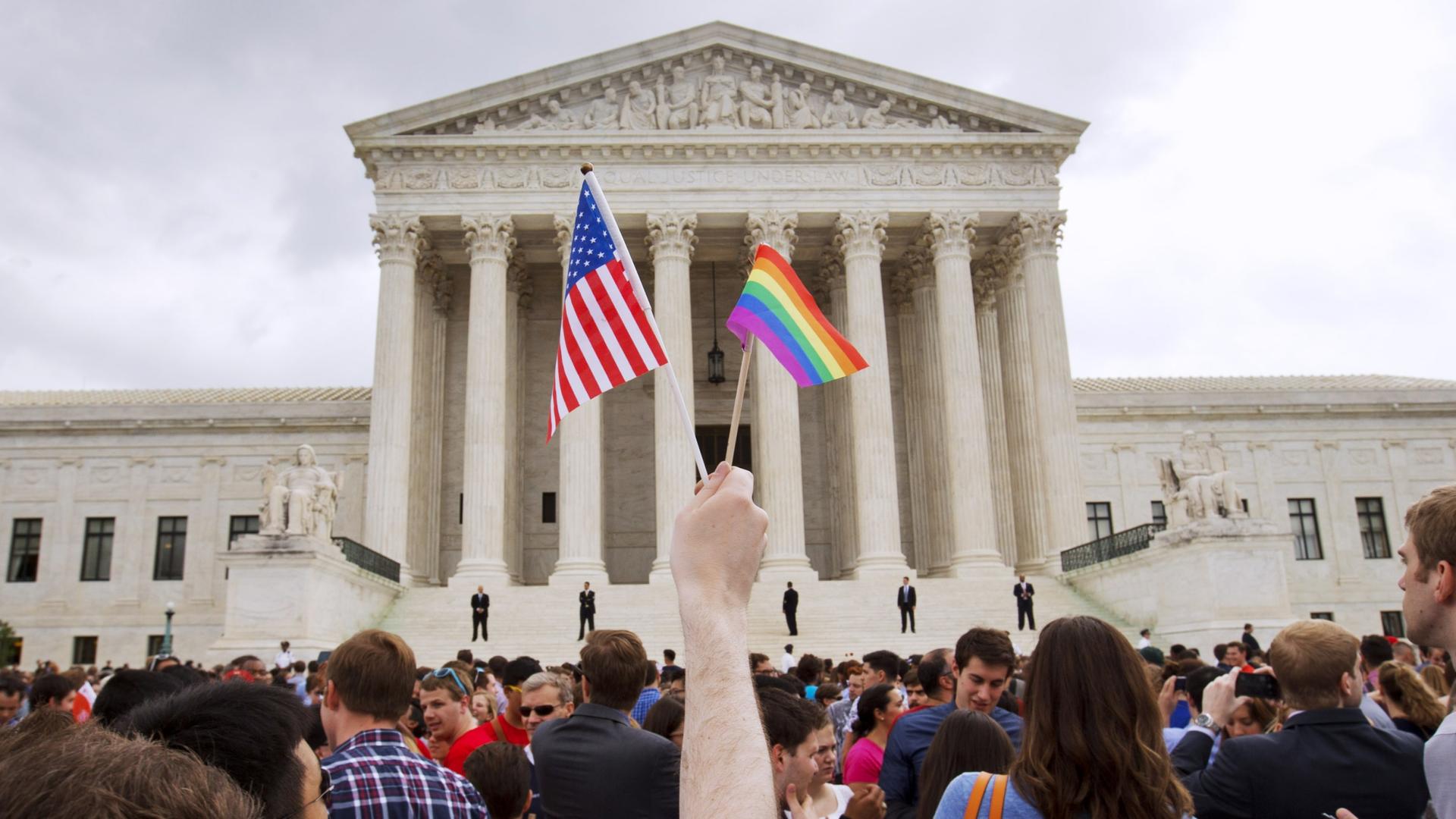In the decades since Roe v. Wade, public sentiment about abortion has remained fairly steady.
By contrast, in the mid-1990s, only around a quarter of the country supported gay marriage, and then, somehow, just 15 years later, those numbers had nearly doubled.
Sasha Issenberg, author of “The Engagement: America’s Quarter-Century Struggle Over Same-Sex Marriage,” tracks the twists and turns that the fight for same-sex marriage in America took, from a power struggle over a parade in Hawaii to shifts in elite opinion, which all brought gay marriage from a “quirky,” niche issue in the 1990s to being federally accepted by 2015.
Main takeaways
- Just 30 years ago, same-sex marriage wasn’t on most politicians’ radars. In fact, in 1996, the Defense of Marriage Act (or DOMA) — which later became a massive hurdle for the gay rights community in passing marriage legislation — was perceived by some Democrats as a short-lived ploy by Republicans to drive a wedge between Clinton and the gay community during an election year. At that point, marriage was far from the main issue that the gay community was concerned with, and it ended up entirely leapfrogging other rights and protections, such as job and housing discrimination.
- One central reason marriage was able to skip the line was because of some especially wealthy proponents, according to Issenberg. While same-sex couples found that different types of legal contracts could mimic many of the legal functions of marriage, such as allowing hospital visitation, one key marital element was missing: protection from the estate tax. Keeping assets in the hands of a spouse rather than the government mattered a lot to the uber-wealthy, such as Tim Gill — an openly gay man who had become rich during the dot-com bubble. In 2005, he gathered like-minded elites to fund a campaign to get a case on same-sex marriage in front of the Supreme Court. The hope was to be heard by 2025, but they far exceeded that goal when same-sex marriage was legalized for the entire country in 2015.
- The massive shift in public opinion, as well as the speed at which it happened, was unprecedented. Many civil rights issues take roughly 75 years to succeed, such as overturning Jim Crow-era laws or achieving suffrage for women. In this case, polls indicate that the largest reason people shifted their views on gay marriage was realizing that they had personal connections with gay and lesbian people, and more people were coming out than ever. Politicians then had to conform to public sentiment. For instance, it was a changing Democratic base that pushed Barack Obama in 2012 to announce that his thinking on the issue “had evolved,” Issenberg says.
The story you just read is accessible and free to all because thousands of listeners and readers contribute to our nonprofit newsroom. We go deep to bring you the human-centered international reporting that you know you can trust. To do this work and to do it well, we rely on the support of our listeners. If you appreciated our coverage this year, if there was a story that made you pause or a song that moved you, would you consider making a gift to sustain our work through 2024 and beyond?
